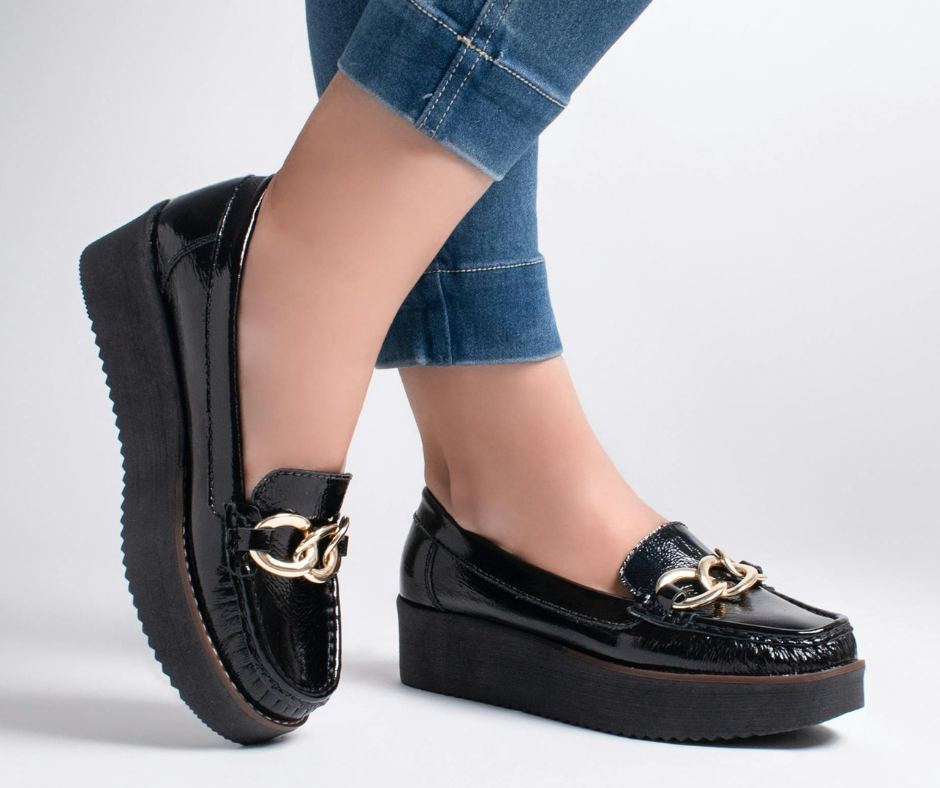Love the Loafer Trend? Sidestep the Pain With a Podiatrist’s Help!


Walk down any city street this fall, and you’ll see them everywhere: sleek, stylish, and sophisticated loafers. They are the go-to shoe for the modern professional, a perfect blend of casual comfort and office-appropriate style. But this fashion trend has a dark side that many are discovering the hard way: persistent, nagging foot pain.
If you’ve found yourself with aching arches or a sore heel after a day in your favorite flats, you’re not alone. The very features that make many loafers look so chic are often the same ones that are terrible for your feet. In this blog, Kentlands Foot & Ankle Center will explain why your stylish shoes might be the source of your pain…and how you can choose a pair that offers fashion and function.
“Why Do My ‘Comfortable’ Flats Hurt Me So Much?”
The irony of many popular loafers and ballet flats is that they are marketed as a comfortable alternative to heels, but they often lack the fundamental features your feet need for support. This is mostly due to:
- Zero Arch Support: The most common design flaw is a completely flat interior.
- Without a supportive arch, the full force of your body weight collapses onto your plantar fascia, the ligament that runs along the bottom of your foot.
- This constant strain is a primary cause of plantar fasciitis.
- No Shock Absorption: A thin, flimsy sole provides zero cushioning against hard surfaces like concrete sidewalks and office floors.
- Every step sends a jarring impact through your heel and up your kinetic chain, leading to heel pain and general foot fatigue.
- Narrow Toe Boxes: Many fashion-forward loafers have a tapered or pointed toe box that squeezes your toes into an unnatural position.
- This can aggravate existing bunions and hammertoes or even contribute to their formation over time.
The Podiatrist’s Checklist for a Better Loafer
You don’t have to give up the style you love. You just need to become a smarter shopper. The next time you’re looking for a new pair of flats, use this simple checklist!
[✔] The Bend Test: A good shoe should only bend where your foot naturally bends—at the ball of the foot. If you can fold the shoe in half in the middle of the arch, it has no structural support.
[✔] The Squeeze Test: The back of the shoe that cups your heel (the heel counter) should be firm and stable. A flimsy heel counter provides no support and can contribute to instability.
[✔] Look for a Removable Insole: This is a game-changer. A shoe with a removable insole allows you to add your own custom orthotic.
[✔] Check for a Subtle Heel: Even a slight, quarter-inch heel is better than a completely flat sole. This small amount of elevation can help to reduce strain on your Achilles tendon and plantar fascia.
The Power of Custom Orthotics
If you’re already dealing with chronic pain or if your foot structure requires more significant support, consider a custom orthotic.
Unlike an over-the-counter insert, a custom orthotic is a prescription medical device created from a 3D scan of your feet. Modern orthotics can be designed with a slim profile to fit discreetly inside many styles of dress shoes and loafers!
Still have questions? Get in touch for a comprehensive foot examination with Kentlands Foot & Ankle Center podiatrist Dr. Jon M. Sherman. To make your appointment, please call our office at 301-825-9697. You can also contact us online.
RECENT POSTS
categories
- Uncategorized
- Featured Articles
- Foot Disorders
- Broken Ankle
- Broken Toe
- Fracture
- Foot Health
- Foot Care
- Arthritis
- Foot Pain
- Skin Cancer
- Podiatry Appointment
- Custom Orthotics
- Podiatrist
- Diabetes
- Gout
- Heart Health
- National Nutrition Month
- National Foot Health Awareness Month
- Foot Safety
- Foot and Ankle Injuries
- Falls Prevention
- Chronic Heel Pain
- Shoes
- Laser Therapy
- Quoted
- Physical Therapy
- KeryFlex
- Sweat
- Summer Foot Care
- Sports Injury
- ESWT
- Fungal Toenails
- Bunion
- Plantar Fasciitis
- PinPointe Laser


